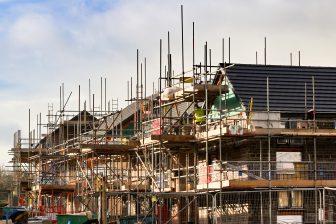 When Steve Reed took over the housing brief from Angela Rayner in September’s reshuffle, the new housing secretary was adamant the government would still deliver 1.5 million new homes in England by 2029. Reed declared that the only way out of what he labelled a housing “crisis” was to “build, baby, build”, warning developers that delays would trigger sanctions.
When Steve Reed took over the housing brief from Angela Rayner in September’s reshuffle, the new housing secretary was adamant the government would still deliver 1.5 million new homes in England by 2029. Reed declared that the only way out of what he labelled a housing “crisis” was to “build, baby, build”, warning developers that delays would trigger sanctions.
But industry leaders say the government faces a “huge challenge” to hit its target, with housebuilders struggling against mounting pressures. So how close is the government to meeting its housebuilding pledge?
The latest net additional dwellings and affordable housing supply data reveals that there were 208,000 net additional dwellings in 2024/25.
“The number was slightly higher than we anticipated in our spring forecast, but essentially in line with expectations,” said Chris Buckle, director of residential research at Savills. “It was still 6% down in 2023/24 and some way short of the 300,000 per year average needed to meet the government’s ambitions.”
Almost all of the reduction was down to a fall in new homes sales, the biggest component of housing supply. Savills’ latest analysis suggests that there were 115,000 new homes sales in 2024/25, down from 121,000 the previous year. Build to Rent completions were also slightly lower in 2024/25.
Affordable housing supply was stable at 59,000 new build affordable homes in 2024/25, almost exactly the same as the previous year. Within this, grant funded affordable housing delivery increased by around 5,000 homes compared to 2023/24, delivering the highest number of new homes since the bumper year of 2014/15. But Section 106 delivery was down, only 24,000 new homes, the lowest number since 2017/18. This means Section 106 delivered only 40% of new affordable homes, having averaged 50% over the previous nine years.
All well and good, but by now rather out of date. So what are next year’s numbers likely to say?
Buckle explained: “Weekly data on EPCs for new homes suggests that housing delivery is stable, at around 200,000 homes on an annualised basis. This is despite a drop in new homes sales rates over the summer, which forms the largest part of delivery.
“Build to Rent starts have dropped to their lowest level for almost a decade and the construction pipeline is shrinking, so no boost likely here.
“That leaves affordable housing. Grant funded delivery may suffer some disruption from the transition to a new funding programme, but starts look fairly stable. Section 106 however still has challenges and is linked to market delivery volumes, so this seems likely to fall further.
“At the same time, planning consents have yet to turn the corner following the Government’s planning reforms. The gap between consents and completions is tighter than at any time in the last 15 years, so even if there is realisable demand for more new homes there is a risk that land supply will be a constraint.
“All of this continues to make it increasingly unlikely that the Government’s 1.5m new homes target will be met. Will there be any boost in the Budget next week to support demand and underpin the planning resource required to increase land supply?”
Read the orginal article: https://propertyindustryeye.com/what-the-latest-data-really-means-for-housebuilding-targets/?utm_source=rss&utm_medium=rss&utm_campaign=what-the-latest-data-really-means-for-housebuilding-targets


